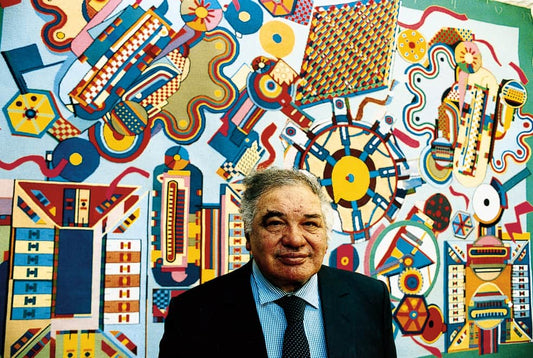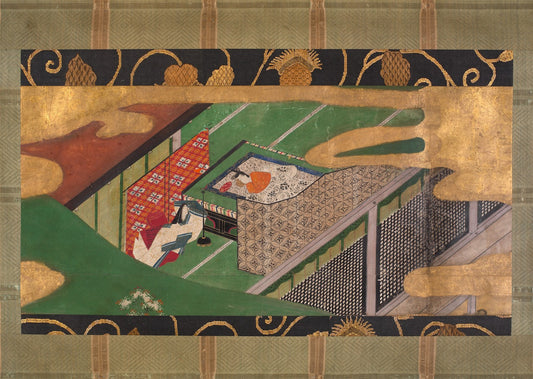Feature image: Hindu funerary ritual depiction via Choice Mutual
History of Funerary Customs
Throughout history, every country, culture, and religion has practiced its own perception of burials. Many ancient cultures in Rome, Mesopotamia, Maya, and Egypt personify funerals and burials as rituals full of celebration. It's riveting to know that, in these ancient civilizations, a funeral and burial were sad occasions. Instead, the goal was to prepare the deceased for the afterlife, so they were often buried with decorative art pieces symbolizing their status and culture. In this article, the following funerary customs of these countries give perspective on different cultures throughout history, along with how they revealed their customs of burial. Fortunately, funerary art has remained for archeologists, which gave insight into how funerary customs were done during ancient times. Now, let's go back and look at what funerary art has to say about historical countries.

Mayan Funerary Art
In Mayan culture, archeologists have found a piece of art known as "The Funerary Mask of the Red Queen." The mask belonged to Queen Tz'akubu Ajaw, who ruled Palenque along with her husband, Janaab Paka I, during the Classical period. The mask itself was initially curated in 672 CE. Interestingly, Queen Tz'akubu's mask was not red; rather, it was green due to the material it was made of. The mask was made of limestone, jade, malachite, and obsidian. The Mayans were vast fans of jade, which they often used in their art and burial customs. However, "the Red Queen" was a nickname for Queen Tz'akubu because her body was covered in red paint when archaeologists found her. In Mayan culture, body paint was an art form. At the time of her death, Queen Tz'akubu was given the same burial as her husband. She was buried with many additional items, just like the Egyptians. The mask, which was placed upon her face, was one of them. Her mask is one of many artifacts that represent Mayan culture and their funerary customs. To this day, "The Funerary Mask of the Red Queen" is displayed at Museo de Sitio de Palenque in Mexico.
Mesopotamian Funerary Art
Funerary art in Mesopotamian culture focused on individual portraits of religious figures, such as priests and priestesses. The individual portraits were sculptures made of limestone, known as Palmyrene Funerary Reliefs. Although Palmyra was between the Roman and Parthian empires, Mesopotamia gained access to the Palmyrene Reliefs through Palmyrene traders. According to ancient inscriptions, Palmyrene traders were connected in many places, such as “Seleucia on the Tigris, in Vologaesias on the Middle Euphrates, and in Mesene at the head of the Persian Gulf - Mesopotamia.” So, the 3-D dimensional sculptures collected were the Palmyrene Funerary Relief Bust of a Priest, Palmyrene Bust of Tamma, and the Palmyrene funerary relief of Vira Phoebe and Gaius Varus. They were created between 50- 150 C.E. The Mesopotamians had one goal regarding burials: “to ensure the passage of the soul of the deceased to the underworld and prevent its return to haunt the living.” Therefore, the Mesopotamians were against cremating. They believed “one’s body was destroyed” and they wouldn’t be able to enter the afterlife.
There were various and specific burial places in Mesopotamia, such as burials in the walls, earth or pit burials, jar or double jar burials, sherd graves, and sarcophaguses. Unlike the Mayans and Egyptians, “the Mesopotamian view of the underworld offered no reward for a virtuous life nor punishment for behaving badly.” Everyone, regardless of class, went to the same place.
Christianity Funerary Art
Shifting to the eighteenth century, artists began to shift more towards oil on canvas paintings depicting religious funerary customs. The artists were more influenced by fictional and real-life deaths for their artwork. For example, in 1808, Anne-Louis Griodet de Roussy-Tiroson, a French painter, painted The Burial of Atala. Unlike the other cultures mentioned, Triosn’s painting follows the narrative of the 1801 novel "Atala or the Love of two savages in the Wilderness" by Francois-Rene de Chateaubriand, a French author. Trison’s painting alone focuses on Atala, who has committed suicide by drinking poison. According to the novel, she chose to kill herself because she couldn’t be with the man she loved, who was an Indigenous man named Chactas. Unfortunately, beforehand, Atala had vowed and committed herself to her Christian faith. Like Romeo and Juliet, the painting reveals two doomed fictional lovers. Although Trison herself is French, the painting follows motifs of Christianity.

Regarding Christianity, Atala, in the painting, is wearing a white dress. White symbolizes innocence and purity. Atala’s “pose” of the priest holding her is the imagery of Christ being held when he’s taken down from the cross.
Roman Funerary Art
Later, in 1889, another French painter and illustrator, Louis Edouard Fournier, painted “The Funeral of Shelley.” This oil on canvas painting depicts the funeral of Percy Bysshe Shelley, the husband of Mary Shelley, the author of Frankenstein. In 1822, Percy died from drowning during a shipwreck on his boat Don Juan. He was only 29 years old. His body was burned on a beach according to laws made by Italy, where his body was washed up and decomposed. Symbolically speaking, Percy’s funeral burning gives imagery of the funerary customs of Ancient Rome. Interestingly, Fournier’s painting is “a Romanticized version of Shelley’s funeral that fictitiously features Mary Shelley and ignores reposts that the poet’s body was quite badly decomposed by the time it appeared on the beach.” According to history, two sides were offered about Shelley’s death - what actually happened and what the artists depicted.

Egyptian Funerary art
Lastly, Egyptians had the funerary custom of mummification and decorated coffins in ancient Egypt. The Egyptians were preparing a royal’s dead body and coffin for the afterlife. The most famous Egyptian tomb is that of King Tutankhamun, best known as King Tut, the boy king. His tomb is the most well-known due to his 1922 discovery in Cairo, Egypt. Upon his discovery by Howard Carter and Lord Carnarvon, King Tut remained unknown for 3,000 years, having been originally buried in 1323 BCE during the 18th dynasty. Today, King Tut: The Immersive Experience reveals the complete discovery of his tomb, his brief life, and his burial process.

King Tut’s tomb had a total of four rooms in his tomb: an antechamber, an annex, a burial chamber, and a treasury room. However, other famous Egyptian coffins and tombs, such as King Rameses VI and Queen Neferatri, exist. They were both buried in the Valley of the Kings. Like King Tut’s tomb, both tombs consisted of many rooms. By the end of the Old Kingdom era in Egypt, Egyptians had a custom of burying royals in a coffin that was decorated after mummification. The coffins were in a tomb that had two main rooms. This burial ritual ensured the deceased had all they needed for the afterlife. Egyptians strongly believed there was an afterlife the deceased traveled to.
Along with a beautifully decorated coffin, the deceased were buried with a golden mask on their faces, their jewelry, their weapons, and Canopic jars, which had the heads of animals in human harm. All of these items were in the burial rooms with the coffin. Three types of Egyptian tombs are pyramids, mastabas, and rock-cut chambers.

Funerary customs have been depicted differently according to famous literary works and different cultures worldwide. Each custom offers its own interpretation of a funeral. Interestingly, some follow ancient beliefs of their being in the afterlife after death, so the deceased individual is buried with the proper essentials. Yet, the funerary customs differed depending on the era in which they were being conducted.
©ArtRKL™️ LLC 2021-2024. All rights reserved. This material may not be published, broadcast, rewritten or redistributed. ArtRKL™️ and its underscore design indicate trademarks of ArtRKL™️ LLC and its subsidiaries.







